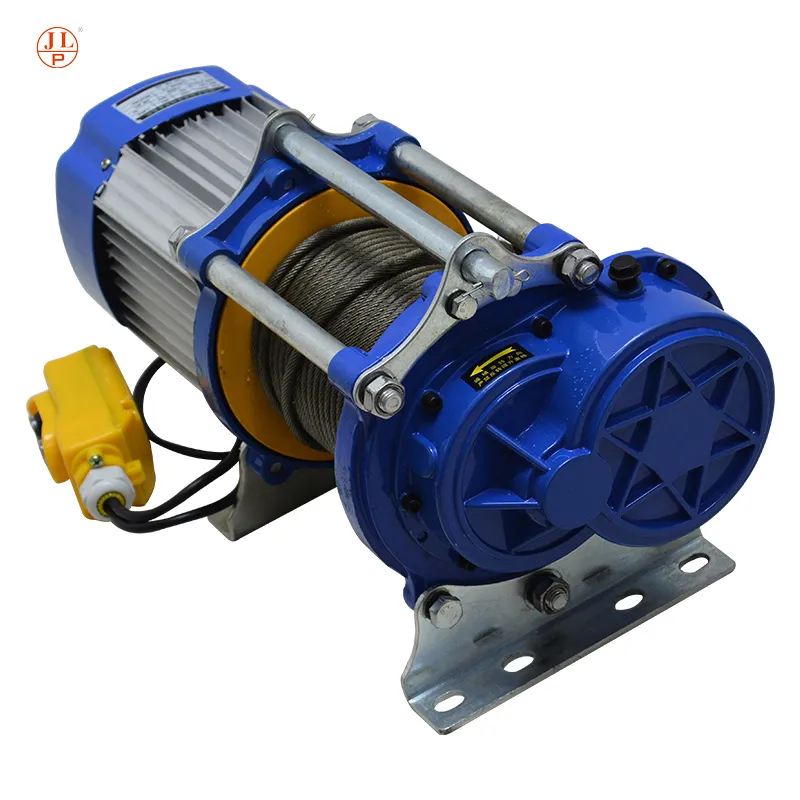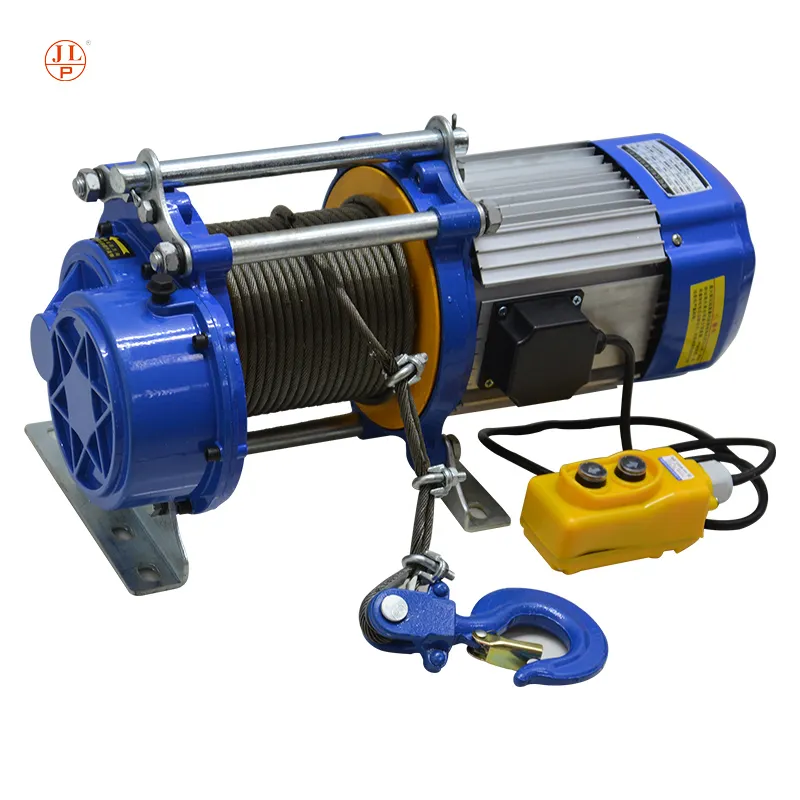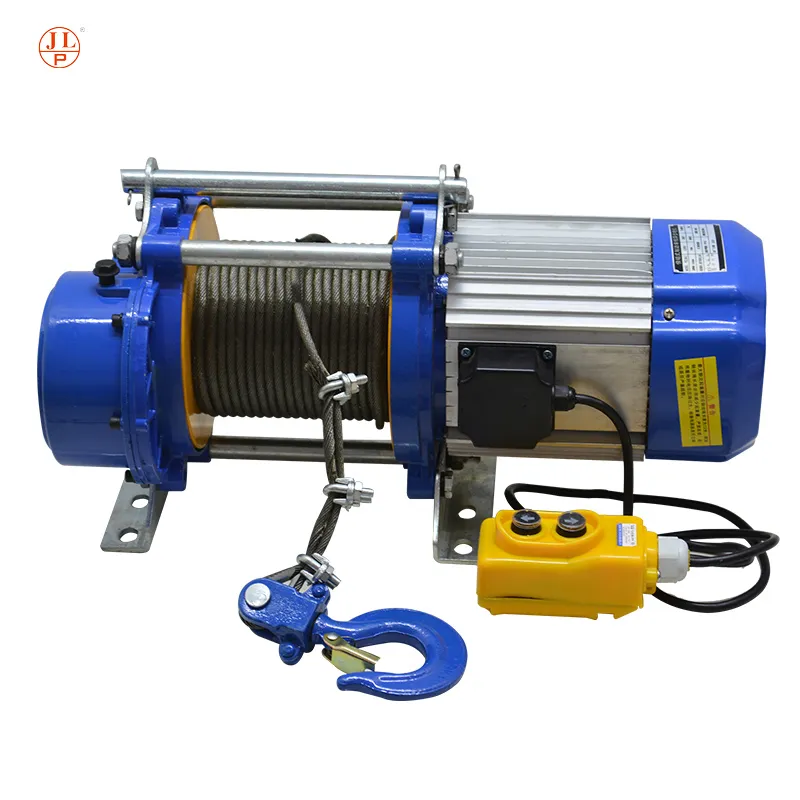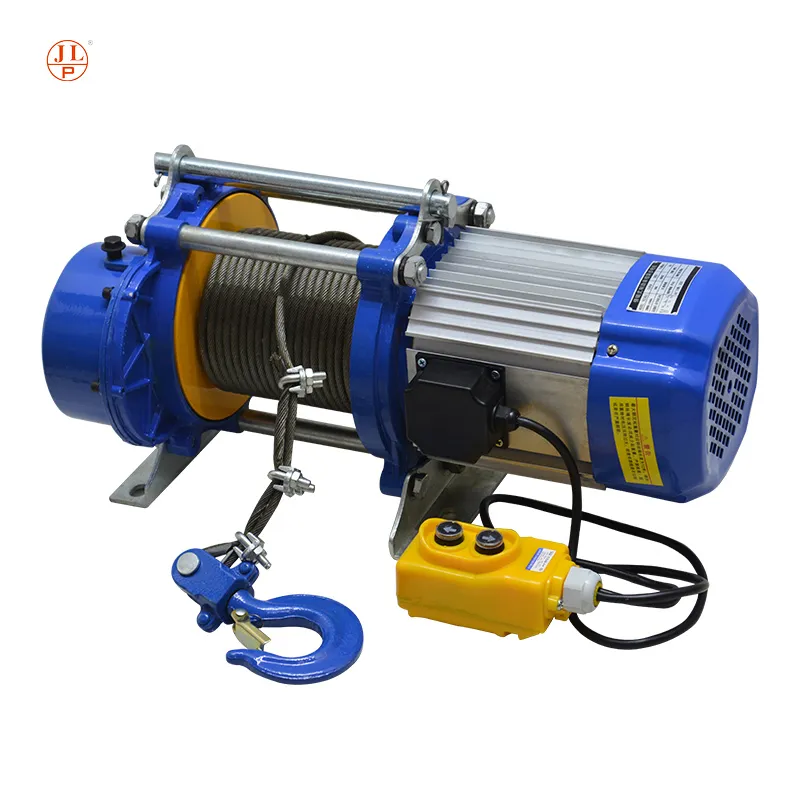


In industrial material handling, the demand for precision, efficiency, and safety is paramount. The modern industrial landscape increasingly relies on advanced lifting solutions to optimize operations and ensure worker protection. Among these innovations, the variable speed electric hoist stands out as a critical technology, offering unparalleled control and adaptability. Unlike traditional fixed-speed hoists, these sophisticated systems allow for incremental adjustments in lifting and lowering speeds, translating directly into enhanced operational fluidity, reduced load sway, and improved positioning accuracy. This level of control is indispensable in complex manufacturing processes, delicate assembly lines, and high-stakes logistical operations where even minor errors can have significant consequences.
The ability to vary hoist speed mitigates shock loads on both the equipment and the lifted material, extending the lifespan of mechanical components and protecting valuable cargo. This capability is particularly crucial when handling fragile components or performing intricate installation tasks. Furthermore, the inherent energy efficiency of variable speed drives, often incorporating regenerative braking, contributes to lower operational costs and a reduced carbon footprint, aligning with contemporary industrial sustainability goals. This article delves into the technical intricacies, application benefits, manufacturing excellence, and strategic considerations surrounding these advanced lifting mechanisms, providing a comprehensive guide for B2B decision-makers and engineering professionals seeking to optimize their material handling infrastructure.
The global market for industrial hoists is experiencing robust growth, driven by increasing automation in manufacturing, the expansion of logistics and warehousing sectors, and stringent safety regulations. The shift towards Industry 4.0 and smart factories is accelerating the adoption of intelligent lifting solutions, with variable speed electric hoist systems at the forefront. According to recent market analyses, the demand for hoists with advanced features such as remote control, diagnostic capabilities, and energy efficiency is projected to grow by over 6% annually through 2028. Key drivers include the need for enhanced productivity in industries like automotive, aerospace, heavy machinery, and construction, alongside a growing emphasis on ergonomic and safe working environments.
There is a notable trend towards integrating hoists with wider crane systems, often orchestrated through centralized control units, enabling seamless material flow across entire production facilities. Furthermore, the development of lighter, stronger materials and more compact drive systems is leading to hoists with higher capacities and smaller footprints, enhancing their versatility in constrained spaces. The rise of specialized applications also fuels innovation, demanding hoists capable of operating in corrosive, explosive, or extremely high-temperature environments, pushing manufacturers to develop more robust and application-specific designs.
Considerations for total cost of ownership (TCO) are also influencing purchasing decisions. While initial investment in a variable speed electric hoist might be higher, the long-term savings from reduced energy consumption, lower maintenance requirements, and decreased operational downtime make them an economically sound choice for forward-thinking enterprises. This comprehensive view of cost, performance, and sustainability underscores the strategic value of investing in state-of-the-art lifting technology.
A variable speed electric hoist distinguishes itself through its sophisticated motor control and mechanical design. At its core is a motor, typically a three-phase squirrel-cage induction motor, paired with a Variable Frequency Drive (VFD) or Variable Voltage Variable Frequency (VVVF) inverter. The VFD allows precise control over motor speed and torque by adjusting the frequency and voltage of the electrical supply. This enables smooth acceleration and deceleration, eliminating the jarring movements common with single-speed systems.
Key technical parameters include lifting capacity (ranging from 500 kg to over 50 tons for heavy-duty models), lifting height, lifting speed (adjustable across a broad range, e.g., 0.1 m/min to 10 m/min), and duty cycle. Duty cycle, often specified according to FEM (Fédération Européenne de la Manutention) or CMAA (Crane Manufacturers Association of America) standards, indicates how frequently and for how long the hoist can operate without overheating. For instance, an FEM 2m classification signifies a medium-heavy duty cycle suitable for general manufacturing.
Safety features are integral to the design, including overload protection, upper and lower limit switches, emergency stop buttons, and thermal protection for the motor. Many advanced hoists also incorporate anti-sway technology, electronic brake wear monitoring, and diagnostic systems for predictive maintenance. The rope or chain system, typically high-strength galvanized steel wire rope or alloy steel load chain, is selected based on capacity and application environment, ensuring robust performance and longevity. Gearing systems are often helical or planetary gears, chosen for their efficiency, quiet operation, and durability.
The Fixed Type JPL-K1 Electric Hoist, for instance, exemplifies these high standards. It is engineered with robust components and precise control systems, making it suitable for demanding industrial applications requiring accurate positioning and smooth operation.

| Parameter | Specification (JPL-K1 - 2 Ton Model) |
|---|---|
| Lifting Capacity | 2000 kg (2 Ton) |
| Lifting Height (Standard) | 6 m / 9 m / 12 m (Customizable) |
| Lifting Speed | 0.8 - 8 m/min (Variable Frequency Control) |
| Power Supply | 3 Phase, 380V/50Hz (Customizable) |
| Motor Power | 2.2 kW |
| Duty Cycle (FEM) | 2m (M5) |
| Control Voltage | 48 V |
| Protection Class | IP55 |
| Insulation Class | F |
| Brake Type | Electromagnetic Disc Brake |
The production of a high-performance variable speed electric hoist involves a rigorous multi-stage manufacturing process, meticulously designed to ensure product integrity, reliability, and extended service life. This process begins with the selection of premium raw materials and progresses through precision engineering, assembly, and comprehensive testing.
High-grade alloy steels for gears, shafts, and hooks. Precision-drawn steel wire or alloy chain. High-quality electrical components. Materials undergo spectrometer analysis and mechanical testing to verify compliance with international standards (e.g., ASTM, EN).
Casting: Hoist housings and drum shells from high-strength cast iron or aluminum alloys. Forging: Hooks and load blocks are drop-forged from specialized steel for maximum strength and fatigue resistance. CNC Machining: Gears, shafts, and precision components are machined using advanced CNC equipment to achieve tight tolerances and superior surface finishes, crucial for smooth operation and minimal wear.
Components undergo heat treatment (e.g., carburizing, hardening) for improved wear resistance and strength. Corrosion protection is applied via painting, powder coating, or galvanization, crucial for harsh environments common in industries like petrochemical and water treatment.
Skilled technicians assemble mechanical components (gearbox, motor, drum, rope guide). Electrical wiring, VFD installation, control panel integration, and safety device connections are meticulously performed according to schematics and safety standards.
Each hoist undergoes static load testing (typically 125% of rated capacity) and dynamic load testing (110% of rated capacity) to verify structural integrity and braking efficiency. Functional tests evaluate lifting/lowering speeds, limit switch operation, emergency stop, and VFD performance. Noise levels, vibration, and temperature rise are also monitored. Compliance with ISO 9001 for quality management and relevant product standards (e.g., ANSI B30.16, EN 14492-2) is strictly adhered to.
The average service life of a well-maintained variable speed electric hoist, built to these standards, typically exceeds 15-20 years, depending on the duty cycle and operational environment. This longevity represents a significant return on investment for industrial clients.

The versatility and precision of variable speed electric hoist systems make them indispensable across a wide spectrum of industries. Their core technical advantages—precise speed control, energy efficiency, and extended equipment life—translate into tangible operational benefits.

Choosing the right variable speed electric hoist vendor is a critical decision that impacts long-term operational efficiency and safety. While numerous manufacturers offer hoists, their technical capabilities, quality standards, and service offerings can vary significantly. Key factors for comparison include product certifications, innovation in VFD technology, material quality, design robustness, after-sales support, and the ability to provide customized solutions.
| Feature | Variable Speed Electric Hoist | Single Speed Electric Hoist |
|---|---|---|
| Speed Control | Infinitely variable, smooth acceleration/deceleration via VFD | Fixed speed, abrupt start/stop |
| Positioning Accuracy | High (millimeter-level), minimal load sway | Moderate, more challenging for fine positioning |
| Energy Efficiency | High, with potential for regenerative braking (20-50% savings) | Lower, constant power consumption |
| Mechanical Stress | Low, extended component lifespan | Higher, increased wear and tear |
| Load Protection | Excellent, reduced impact on delicate loads | Moderate, higher risk of load damage |
| Initial Cost | Higher | Lower |
| Total Cost of Ownership (TCO) | Lower (due to energy savings, less maintenance) | Higher (due to energy usage, more frequent maintenance) |
Leading manufacturers understand that off-the-shelf solutions may not always meet the unique demands of specific industrial environments. This is where customized solutions for variable speed electric hoist systems become invaluable. Customization options can include:
A reliable vendor will engage in detailed consultations, performing site assessments and engineering analyses to ensure the customized hoist perfectly integrates into the client's operations, maximizing efficiency and safety.

Real-world application demonstrates the transformative impact of variable speed electric hoist technology. Our experience with diverse industrial partners highlights tangible benefits in productivity, safety, and operational cost reduction.
A major automotive manufacturer struggled with slow and imprecise placement of heavy engine blocks onto assembly lines using conventional single-speed hoists. This led to frequent bottlenecks and potential damage to components. By implementing 10 units of the Fixed Type JPL-K1 Electric Hoist with variable speed control, they achieved:
Customer Feedback: "The precision and fluidity of the variable speed hoists have revolutionized our assembly process. Our team reports increased confidence, and the reduction in damaged parts has been a substantial saving."
An offshore drilling company required a robust, corrosion-resistant hoist for lifting heavy equipment during maintenance operations in harsh marine environments. The challenge was precise positioning of subsea components while battling strong winds and platform movements. We provided a custom-engineered JPL-K1 variant, featuring marine-grade coatings, IP66 protection, and advanced anti-sway programming for its variable speed drive.
Customer Feedback: "Operating in the North Sea demands equipment of the highest caliber. This variable speed hoist has proven its worth, providing the control and reliability essential for our critical offshore operations."
Building long-term partnerships in the B2B sector hinges on transparency, reliability, and robust support systems. We are committed to upholding the highest standards of trustworthiness through clear communication and comprehensive after-sales services.
Q: What is the typical lead time for a standard Fixed Type JPL-K1 Electric Hoist?
A: For standard configurations, the lead time is typically 4-6 weeks from order confirmation. Customized solutions may require an additional 2-4 weeks for design and specialized component sourcing.
Q: What warranty is provided with the variable speed electric hoist?
A: All our hoists come with a standard 12-month warranty covering manufacturing defects and component failures under normal operating conditions. Extended warranty options are available upon request.
Q: How does the VFD impact maintenance compared to traditional hoists?
A: VFDs actually reduce mechanical wear on components due to smooth operation, potentially lowering maintenance frequency for mechanical parts. However, VFDs themselves are electronic devices that require proper environmental conditions and occasional firmware updates or diagnostic checks. Our technicians are trained in VFD diagnostics and repair.
Q: Can your hoists be integrated with existing crane systems?
A: Yes, our variable speed electric hoists are designed for modularity and can be seamlessly integrated into most existing overhead crane, gantry crane, or jib crane structures. We offer engineering support to ensure compatibility and optimal performance.
Q: Are spare parts readily available?
A: We maintain a comprehensive inventory of critical spare parts for all our hoist models, ensuring quick dispatch and minimizing downtime for our clients globally. We also offer recommended spare parts kits for preventative maintenance.
Our commitment extends beyond the sale, ensuring that your investment in a high-quality electric hoist continues to deliver value throughout its extensive service life.
The variable speed electric hoist represents a pinnacle of modern material handling technology, offering a compelling blend of precision, efficiency, and safety for demanding industrial applications. Its ability to provide unparalleled control over load movement translates into significant operational advantages, including enhanced productivity, reduced energy consumption, extended equipment lifespan, and improved workplace safety. As industries continue to evolve towards greater automation and more stringent quality standards, the adoption of advanced lifting solutions like the Fixed Type JPL-K1 Electric Hoist becomes not just an option, but a strategic imperative. Partnering with a reputable manufacturer that prioritizes rigorous quality control, offers comprehensive customization options, and provides unwavering after-sales support ensures that businesses can confidently leverage these technologies to drive innovation and sustain competitive advantage in a rapidly changing global market.



